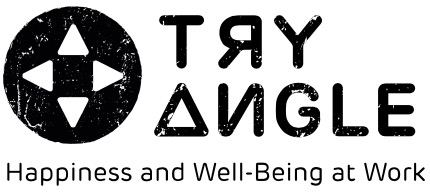Jen Fisher, Chief Well-Being Officer at Deloitte is a frail lady. Engaging, sympathetic and vulnerable in all her being. When you meet her, you can’t help but feel the humanity in every cell. And that feeling only gets stronger when she tells her story.
One illness is not the other
Jen survived cancer. The disease was horrific, the recovery process lengthy. Fortunately, she felt well surrounded and one person after the other offered a listening ear. Everyone knows someone who became a victim of cancer, making it perhaps one of the most talked-about disease of our time.
A few years earlier, Jen had fallen victim to another horrific illness with a long recovery process alike. Unlike her cancer experience, Jen felt uncomfortable talking about how burned out she felt. It was as if her story was not taken seriously, which is something a lot of people facing burnout experience.
Very often people suffering from burnout describe how quickly people are ready to pass judgement and offering a listening ear gets replaced by – no doubt well-meaning – giving advice. With a cancer diagnosis, the seriousness of the illness is never questioned. With a burnout diagnosis very often it is. When colleagues are absent due to cancer, they report how their phones get blown up with encouraging messages and heartfelt questions about how they are doing. In many burnout absence cases, the silence is deafening, sometimes clarified by “I didn’t know what to say” when you address people on your return.
Back to work
The examples of cancer patients who return to work and are very spontaneously given time and space to gently readjust are numerous. When reintegrating after burnout, colleagues seem to assume that the person in question should immediately be able to get right back at it and give 100%.
And that is perhaps not so surprising. After all, a burnout recovery process often requires getting back into energy-giving activities after the necessary time to rest. The number of people who, following the advice of a coach or psychologist, finally awaken the child inside them in an amusement park or go for a walk by the sea, then post a picture of that positive energy-giving experience on social media, only to be treated to eyerolls and statements like “too sick to come to work, but apparently exploiting it is just fine” are numerous. It goes without saying that this kind of backstabbing and blaming does not help the recovery process. Cancer patients who finally go on an outing after a long time are applauded.
Society’s judgement
The difference is not with linked to the disease nor the sick person. The difference is in how we as a society view both illnesses. Jen Fisher is right: “What if we took burnout as seriously in the workplace as cancer?” A simple question and yet not so obvious to answer because burnout often looks very different “on the outside” than how it feels “on the inside”.
Jen Fisher confirms, “On the outside, I was the ideal success picture. On the inside, by contrast, I was grounded and was just a shadow of myself.” Burnout does not come out of the blue and we often see “decreased productivity” as one of the ultimate signs. Again, this should not be surprising according to Jen because people can be very performant while not feeling well (at all) at all. So productivity as a parameter of wellbeing is extremely inefficient and even downright wrong.
How productive can someone be on the path to burnout?
Feelings of guilt
A typical side-effect of burnout is feeling sky-high guilt. As a protective mechanism, we often see people mentally drop out in the run-up to burnout, but once they then drop out they often feel guilty for letting down their colleagues, their clients, their boss. “I have a terribly important job” is something you may frequently hear in an initial burnout coaching session.
Time and again, you hear about how people have gone into overdrive and worked (too) hard. In principle, there’s nothing necessarily wrong with that as long as there are sufficient resources such as time, colleagues, information, autonomy, clear guidelines, … Models such as Karasek and JDR (Job Demands Resources) clearly illustrate this.
It is only when the availability of resources is too low or underrated (do not underestimate the impact of perception!) that people risk ending up in the orange or red zone. In doing so, they often continue to prioritise productivity at the expense of their own (mental) health.
Attention to well-being in the workplace
So the question is not whether people work (too) hard, but whether they can work having sufficient support. Or to put it Jen Fisher’s words: “Is it about working hard or is it about working well?” The answer is obvious, but how do you go about “working well”?
Here are some concrete tips for more well-being at work
- Everything starts with self-care. No matter how easily we may point the finger at the manager in case of problems, the fact is that only one person can really take care of you and that is you. Only you feel what you feel. Only you can assess how you are really doing. Of course, to do so you have to have the courage, the ability and the will to look in the mirror. And that is often where it can become challenging. After all, self-care is about self-worth. You can only take care of yourself when you consider yourself worthwhile. Moreover, we still too often see self-care as something “we have to earn”, just like students are allowed to let their hair down if they studied well and how a child gets an ice cream if he has performed certain chores well. As long as we keep labeling self-care like that, we won’t get our “non-negotiables” clear and we won’t have a clue about our golf balls….
- With the need for sufficient support in mind, it should come as no surprise that managers also play a crucial role if you want to achieve well-being at work. Human skills – they are far from “soft”! – lie at the heart of good leadership. Communication skills, empathy, flexibility in thinking, vulnerability – these are just a few components of the fundamental toolbox for good leadership, and too often there is still little or no budget available for these because “the bottom line” is that it is still too often (solely) about money. Maybe this will make you change your mind: without your people, there is no “bottom line”….
- Well-being is a shared responsibility. Burnout is a systemic problem and it requires a systemic solution. An afternoon yoga session or a workshop with some stress management techniques will not solve the issue. On the contrary. If we want to get to the heart of the matter, we will have to reinvent the concept of work. And we will all have to do that together, in absolute co-creation.





